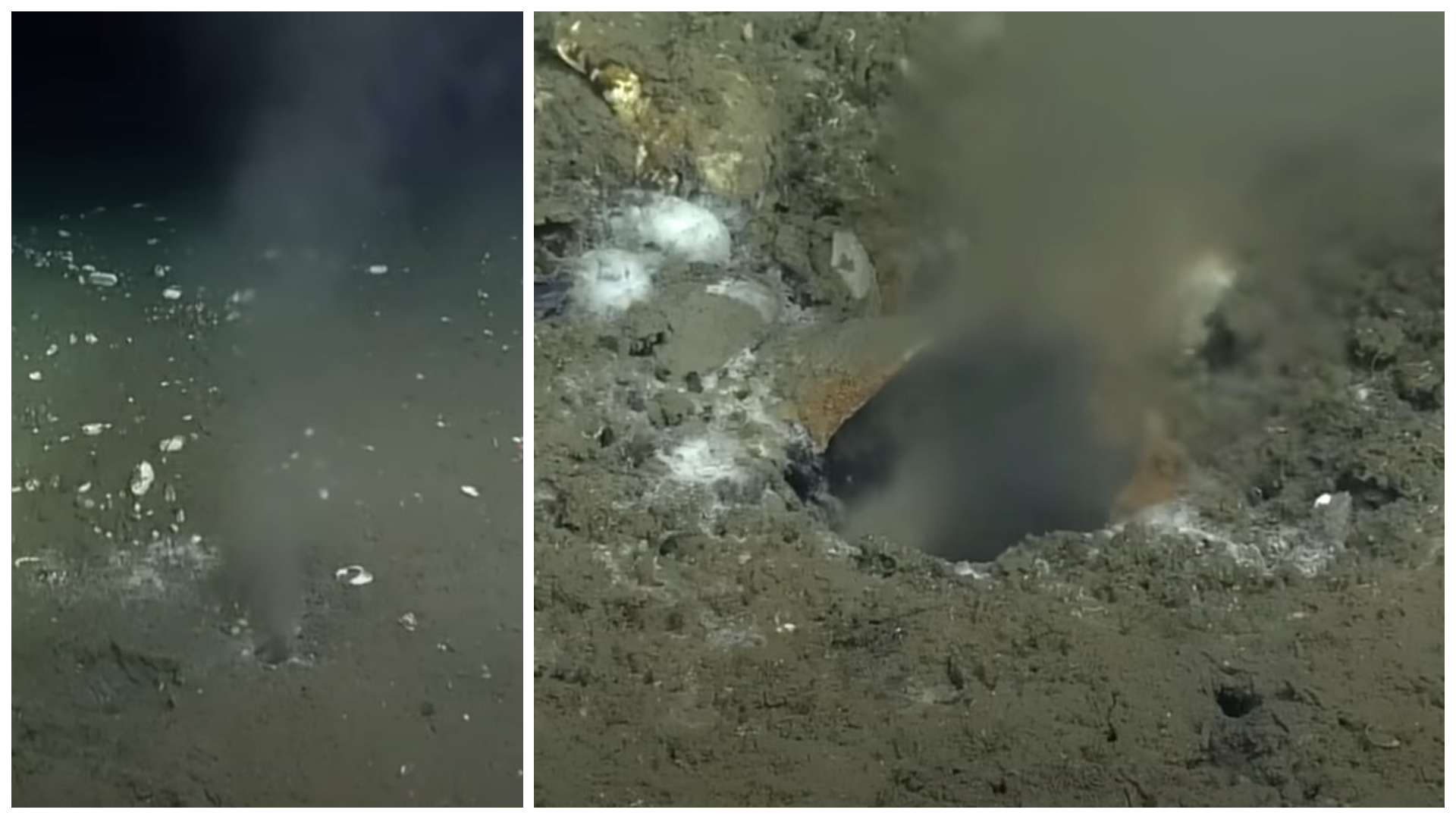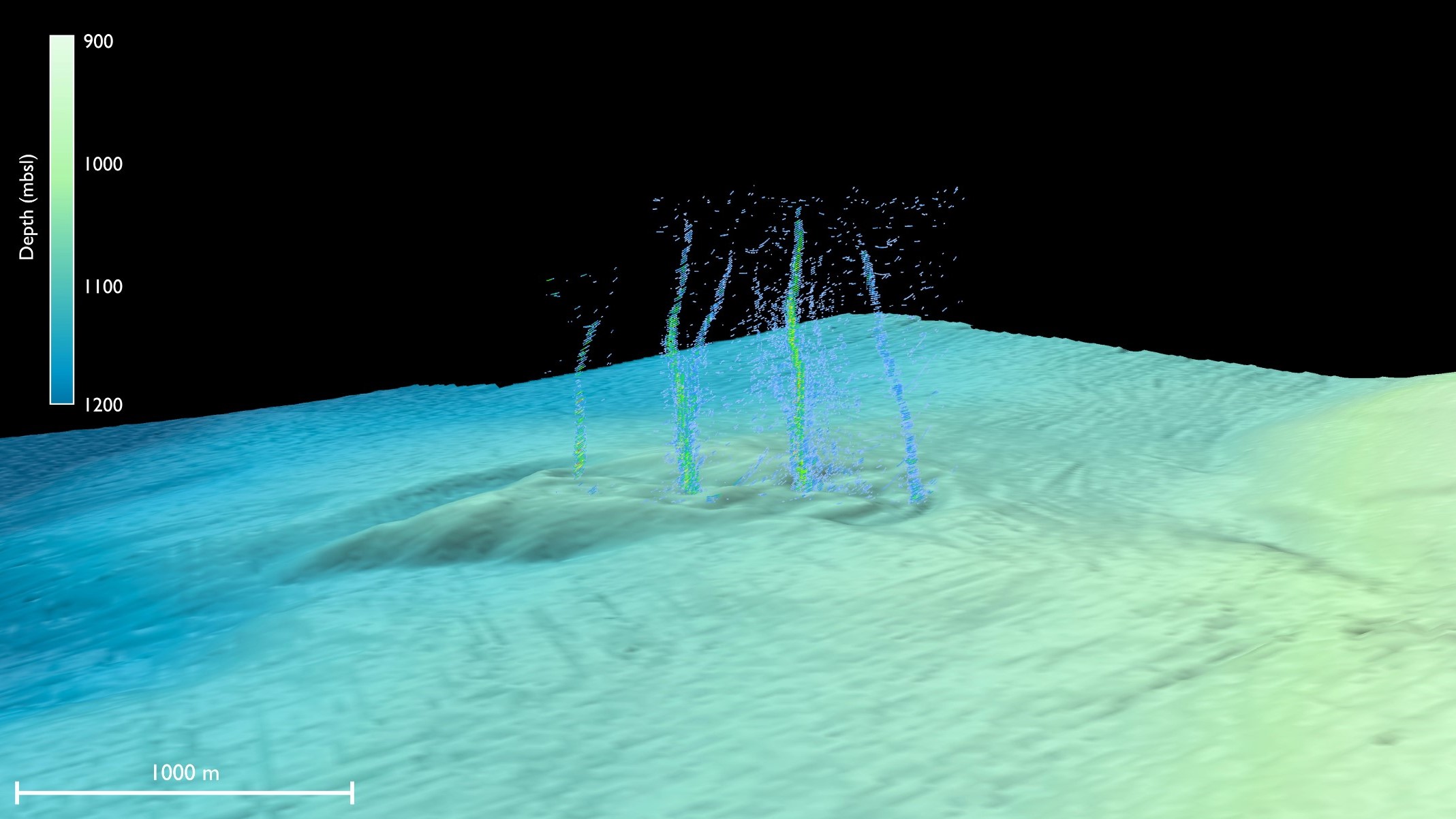Scientists find weird holes on the ocean floor spewing ancient fluids 'like a fire hose'
Understanding the movement of fluids in the Cascadia subduction zone can help researchers pinpoint the risk of earthquakes

Holes spewing warm fluids from the boundary between tectonic plates have been discovered at the bottom of the ocean off the coast of Oregon. Researchers think this strange, never-before-seen phenomenon, dubbed Pythia's Oasis after an ancient Greek priestess, could provide insight into earthquake risk along the dangerous fault — although exactly how it affects the tectonics is unclear.
The Cascadia subduction zone stretches from Vancouver Island to northern California. It is the offshore region where the Explorer, Juan de Fuca, and Gorda oceanic plates slide under the North American continental plate. The plate boundary has the capacity to produce earthquakes of magnitude 9 or more — among the most powerful quakes produced on Earth — according to the Oregon Department of Emergency Management. A devastating quake could also be accompanied by tsunami waves up to 100 feet (30.5 meters) high.
Now, research published Jan. 25 in the journal Science Advances finds that off the coast of Newport, Oregon, on the seafloor 3,412 feet (1,040 m) below the ocean surface, there is a series of at least four small vents bubbling fluids from deep within the fault.

These vents, each of which measures about 2 inches (5 centimeters) across, are about 50 miles (80 kilometers) from the shore. The geochemistry of these fluids reveals that they originate from about 2.5 miles (4 km) deep, near where the plates meet.
The escape of these fluids could influence how the plates interact, which could ultimately influence how and when earthquakes occur in the region.
"It's potentially changing the stresses and the pressure of fluids at greater depth," Demian Saffer, director of the University of Texas Institute for Geophysics, who was not involved in the research, told Live Science. "That becomes interesting, because those are the depths where we think about earthquakes possibly occurring."
Saffer said there is no simple correlation between fluid flow and earthquakes and thus more work will be needed to understand if or how these fluids affect earthquake risk in the Pacific Northwest.
Get the world’s most fascinating discoveries delivered straight to your inbox.
The vents were first spotted by then-University of Washington graduate student Brendan Philip, now a White House policy adviser, during a research cruise. The ship's sonar detected bubbles rising from the seafloor, study co-author Evan Solomon, an associate professor of oceanography at the University of Washington, said in a statement.
"They explored in that direction and what they saw was not just methane bubbles, but water coming out of the seafloor like a firehose," Solomon said. "That's something that I've never seen, and to my knowledge has not been observed before."
The fluids were 16 degrees Fahrenheit (9 degrees Celsius) warmer than the surrounding seawater, indicating they originate from deep, hot portions of the crust, and rich in minerals such as boron and lithium. The fluids are coming from crust that was last on the surface 2 million years ago, Saffer said.
"We can't sample the rock, but we're getting the fluids that are touching those rocks," he said.
How this fluid affects the behavior of the fault is an open question, Saffer said.
"There are some arguments … where we think that highly pressurized fluids might play a role in suppressing earthquake behavior and instead promote slower kinds of failure, like slow-slip events or even stable aseismic creep," he said. Slow-slip events are gradual plate movements that release energy without causing shaking, while aseismic creep is the movement of faults past one another without friction or earthquake hazard. There are still too many unknowns about the plumbing underlying the newly discovered vents to say for sure what effect the flow might have.
"It's somehow draining or partly draining the fault," Saffer said. "What we don’t know is over how big an area that's happening, and we also don't know how much that's changing the pressure and stress on the fault. … Those are the kinds of things that would be natural next steps to try to figure out."

Stephanie Pappas is a contributing writer for Live Science, covering topics ranging from geoscience to archaeology to the human brain and behavior. She was previously a senior writer for Live Science but is now a freelancer based in Denver, Colorado, and regularly contributes to Scientific American and The Monitor, the monthly magazine of the American Psychological Association. Stephanie received a bachelor's degree in psychology from the University of South Carolina and a graduate certificate in science communication from the University of California, Santa Cruz.

